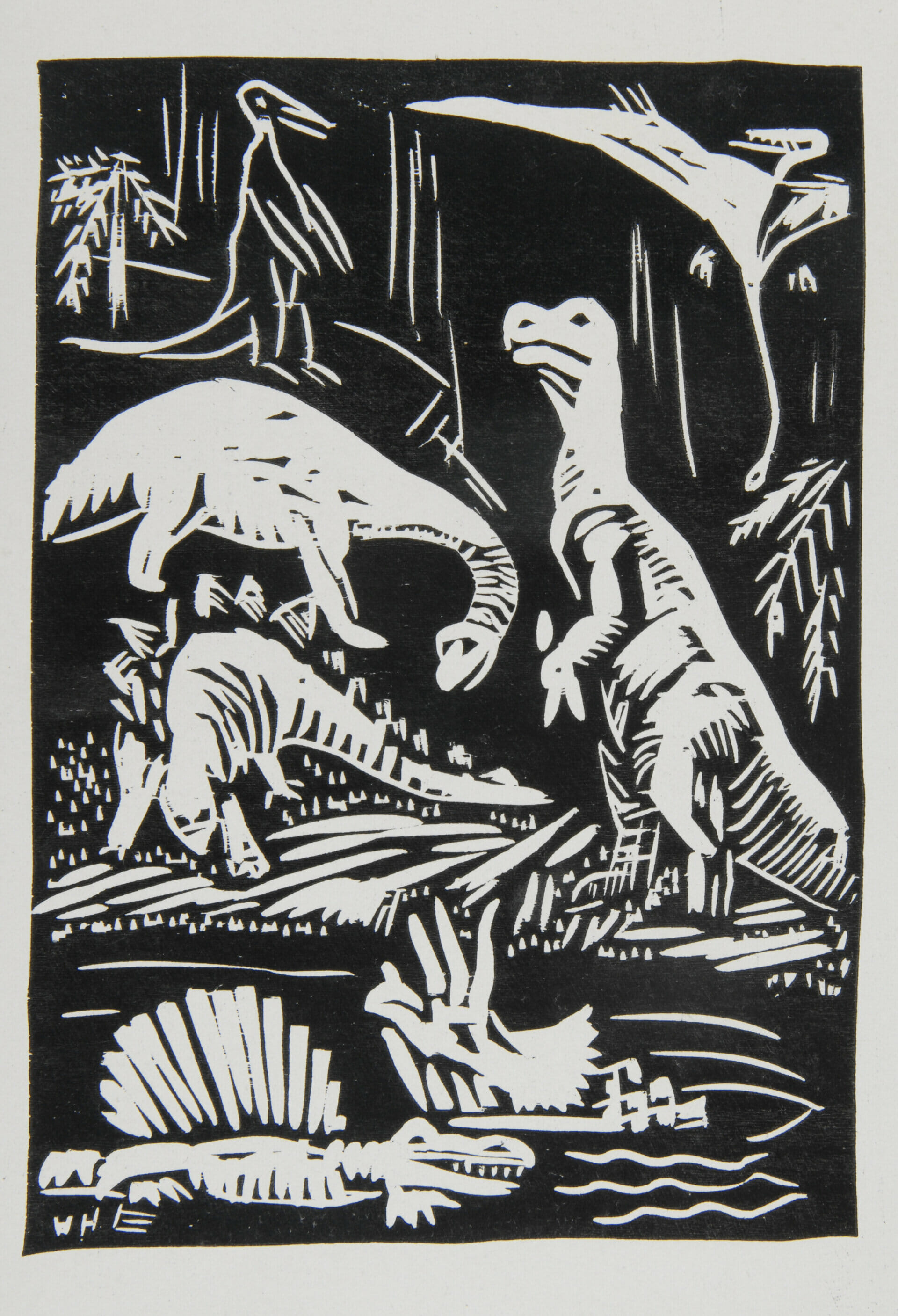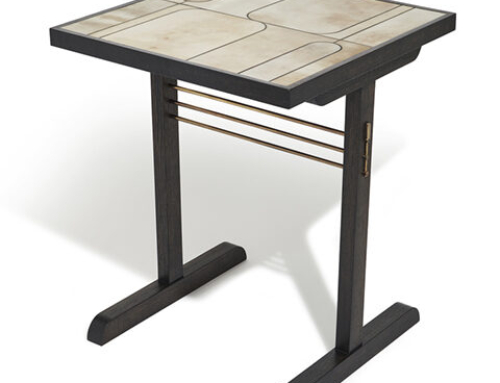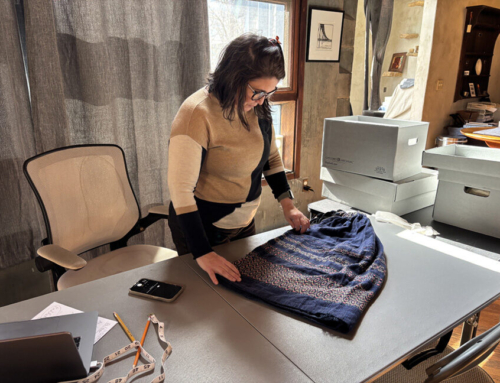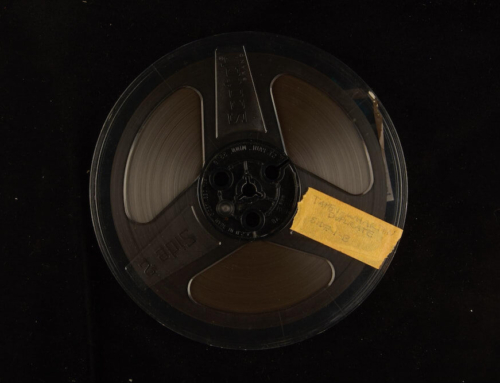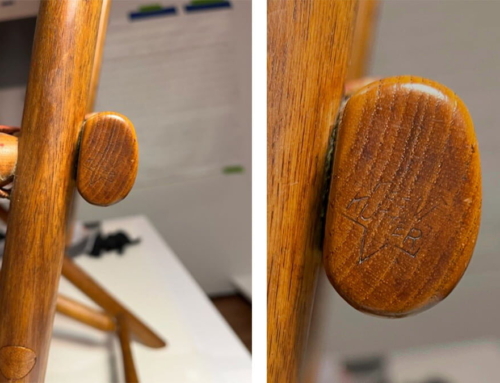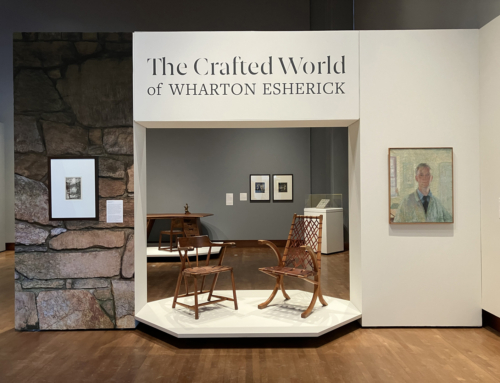
This early woodcut by Wharton Eshrick illustrated the poem, “Ornaments,” in “Rhymes of Early Jungle Folk,” 1922.
Wharton Esherick’s adventures in printmaking began in the winter of 1919-1920 when he befriended author and social activist Mary Marcy. At the time, Wharton and his family had traveled to Fairhope, Alabama, a single-tax community, full of progressive thinkers, artists and authors. It was there he was given his first set of wood carving tools, carving frames for his paintings and experimenting with woodcuts. Soon Esherick and Marcy were working together on a children’s book on evolution, Rhymes of Early Jungle Folk. Continuing a theme from an earlier book, Stories of the Cave People, Marcy began writing playful verse about everything from prehistoric pony rides to the Mesozoic roars of dinosaurs.
Illustrating the book are some of Esherick’s earliest woodcuts, rudimentary but well composed, created hand in hand with the text. When Marcy began the project she shared a poem with Esherick, who was inspired to create a woodcut illustrating the poem. Inspired by his woodcut Marcy wrote another poem, shared it with Esherick who carved another woodcut. In this way, they collaborated until Rhymes of Early Jungle Folk was complete.
Printmaking became a critical transitional medium for Esherick, providing him with some of his first public acclaim, including from Carl Zigrosser, Curator of Prints and Drawings at the Philadelphia Museum of Art, who became a frequent visitor to Esherick’s studio. Esherick would go on to illustrate a number of other publications through the Centaur Press and have his woodcuts published in celebrated magazines of his day including Vanity Fair, Century, and The Forum.
Recognizing the important role printmaking played in Esherick’s development as an artist, the Museum has hosted an annual printmaking competition for high school since 2010, thanks to funding and support from an anonymous donor. What began with just a handful of local high schools has now expanded to include Bucks, Chester, Delaware, Montgomery, and Philadelphia counties. High school classes submit their best work, and from that, a jury of staff and art professionals select finalists to be exhibited here at the Museum.
Imprint 2018, currently on view in our Visitor Center, is unique in that we selected a second round of finalists who, along with those in our show, will be included in an exhibition at the Philadelphia International Airport in 2019. The exhibition at the airport will include an introduction to Wharton Esherick and WEM and hopefully excite the curiosity of a few travelers passing through! In anticipation of this partnership with Art at the Airport, we introduced a theme to this year’s competition: The Life and Work of Wharton Esherick. The results astounded us, with students exploring a range of interpretations, including portraiture, landscapes and places Wharton loved, and depictions of the Studio both real and imagined.
Featured here are the 1st, 2nd, and 3rd place winners from this year’s show:
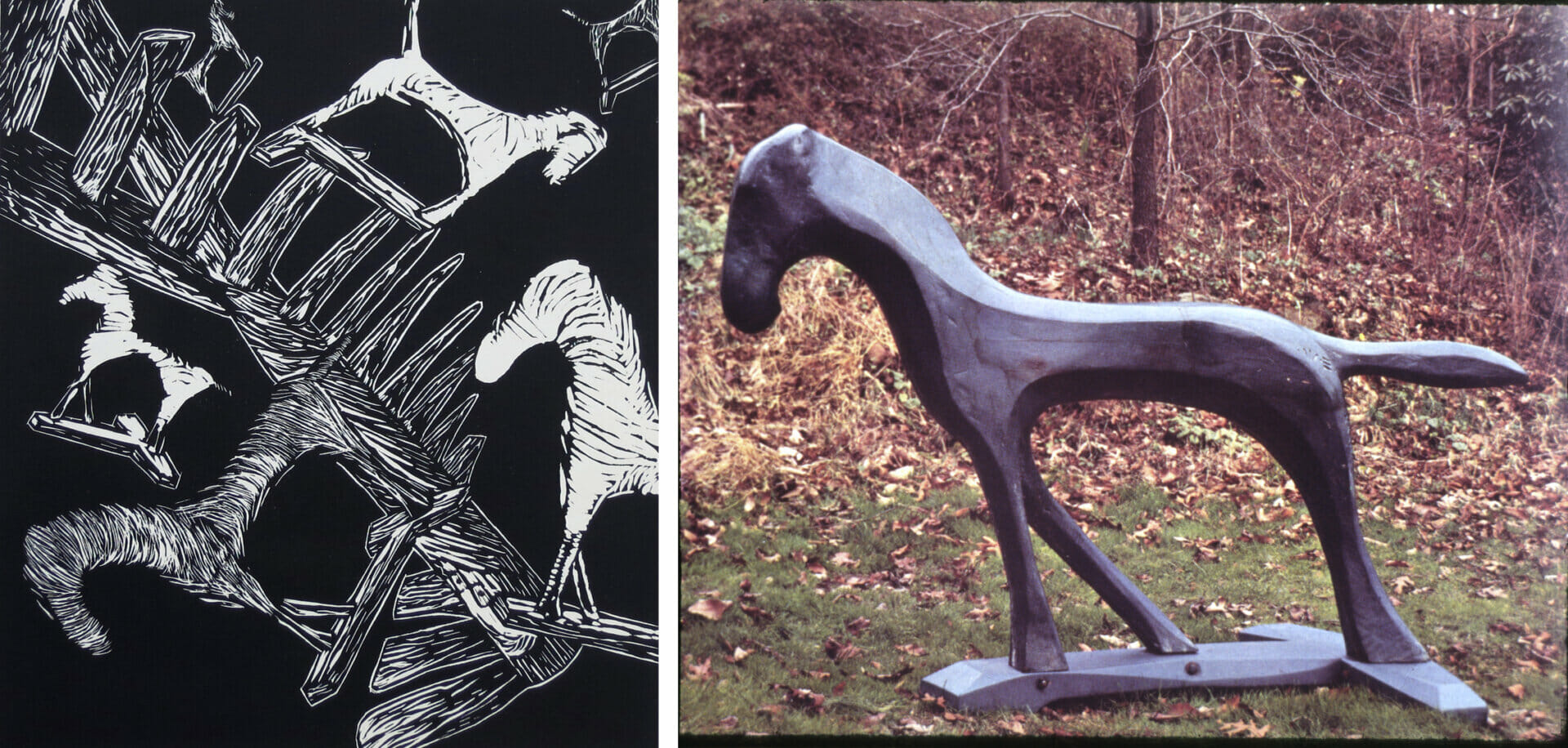
Left: 1st Place winner “Cheeter and Jeeter Movement” by Angelina Calderone, Abington Senior High School, Right: “Jeeter” 1934, Wharton Esherick.
Artist’s Statement: I did this piece because I very much enjoyed his horse sculptures and they inspired me since I read about how happy these sculptures made the community.
Curator’s Note: In 1934, Esherick sculptured two horses to stand out front of the Hedgerow Theatre in Media. Cheeter and Jeeter were carved out of pine and often a favorite “play ground” for children at the local School of Rose Valley who enjoyed climbing all over them.

Left: 2nd Place winner “Homage to Wharton” by Katherine Flad Abington Senior High School, Right: Wharton Esherick c. 1930. Photo attributed to Consuelo Kanaga.
Artist’s Statement: Homage to Wharton is inspired by the life and excitement Wharton Esherick had throughout his life. The wooded scene behind him is meant to slowly morph into his shoulder representing the effect the Pennsylvania woods had on Wharton Esherick and his work.
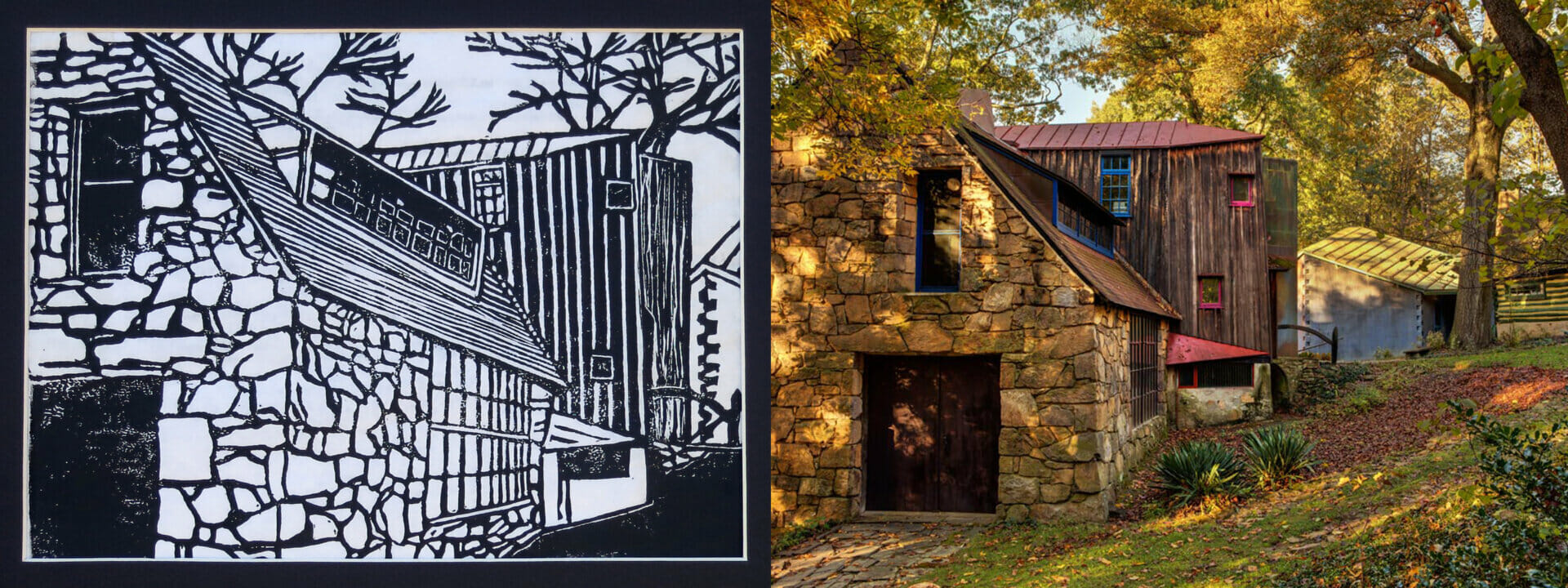
Left: 3rd Place winner “Wharton Esherick Museum” by Adeline Cambria, Bishop Shanahan High School, Right: Photo of the Museum by Charles Uniatowski.
Artist’s Statement: On the topic of Wharton Esherick’s life I knew that I wanted to focus on architecture. Architecture is a huge passion of mine and after seeing Wharton Esherick’s Museum I was completely inspired.
Imprint 2018 is on view in our Visitor Center now through May 20.
More on the competition can be found here.
Post written by Communications and Special Programs Manager, Katie Wynne.
April 2018

